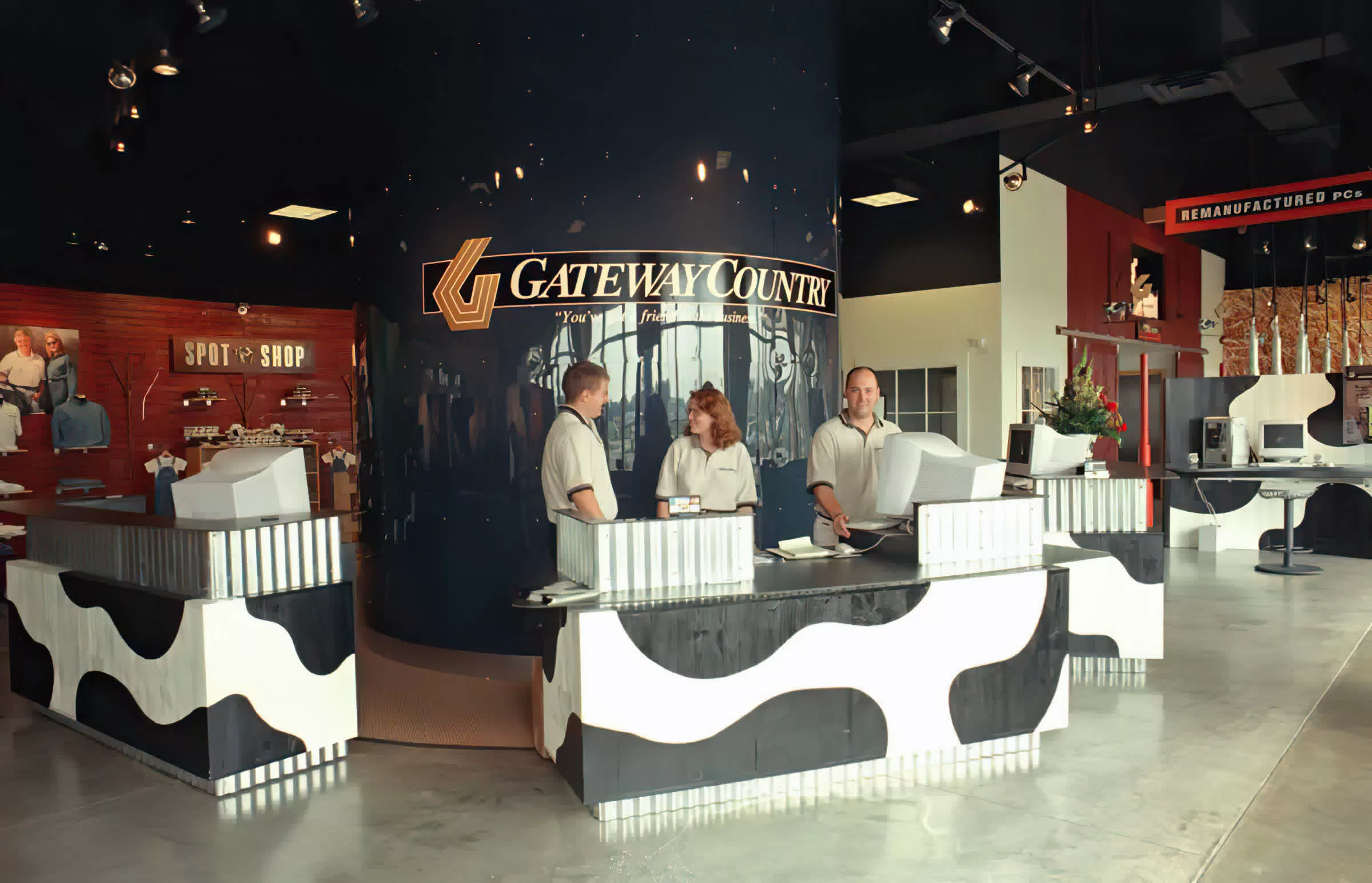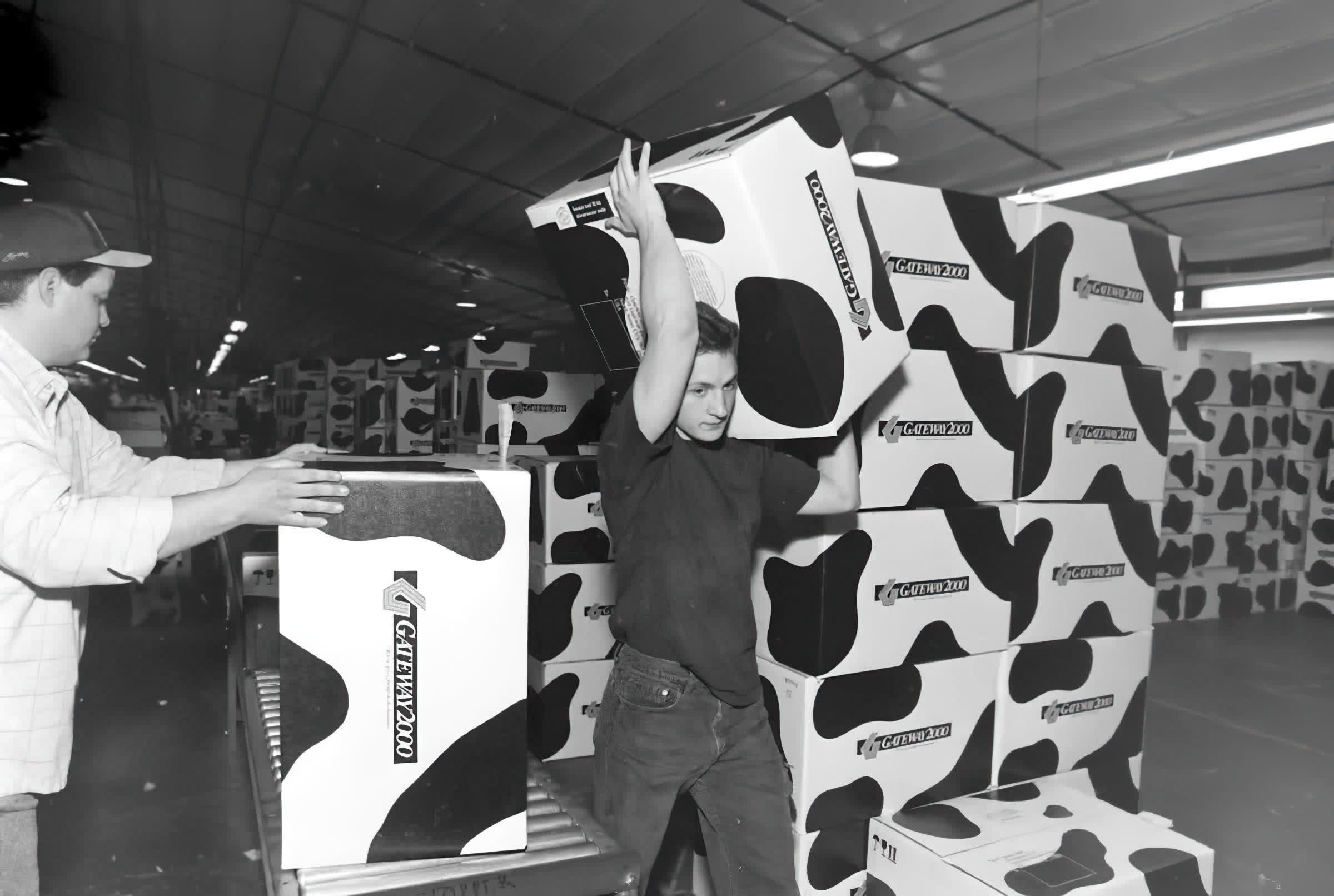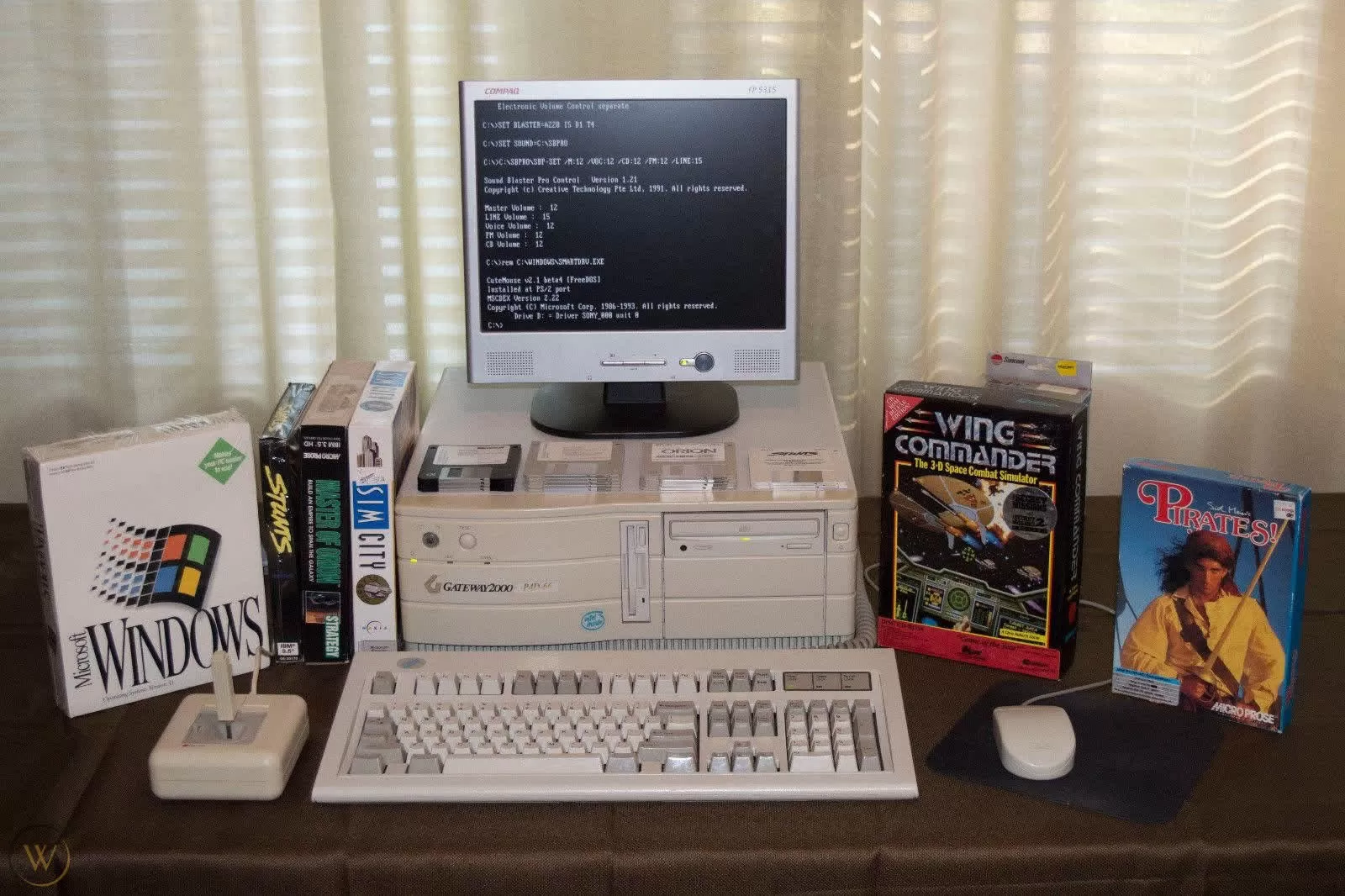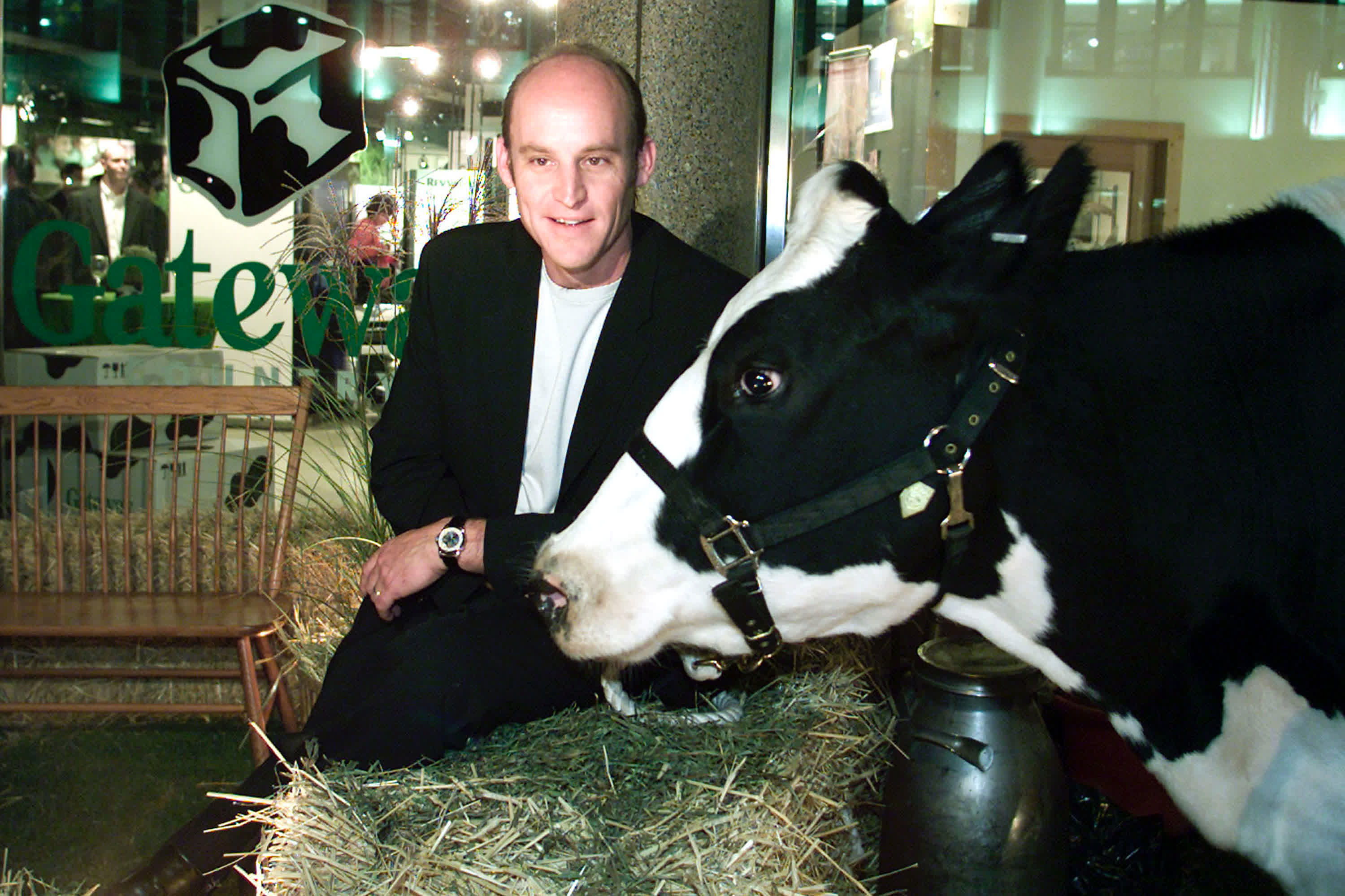What does a cattle ranch have sasha reprogramed to erotice debtin common with computers? Admittedly not much, but that didn't stop a couple of college dropouts from capitalizing on the concept to create a lucrative business that would reshape how consumers perceive and purchase personal computers.
A chance encounter between Ted Waitt, a University of Iowa sophomore studying marketing and business, and Mike Hammond, a computer store employee in Des Moines, in the fall of 1984 would lead to the two going into business together less than a year later.
The company they founded, TIPC Network, was a computer mail-order business that launched on September 5, 1985. Waitt's grandmother, Mildred Smith (known as "Mo Mo" to her grandchildren), put up her $15,000 certificate of deposit as collateral to secure a $10,000 loan used to get the operation off the ground. Waitt's father allowed the duo to run the business out of a two-story farmhouse on his cattle ranch.

Against all odds, the Iowa-based firm, which utilized a business model similar to Dell direct sales, was a hit from the beginning, raking in $100,000 in sales in just four months.
In February 1986, Waitt's brother, Norm Jr., was brought on as a full partner to handle the company's finances. Soon enough, the trio started selling custom-built PCs for cheaper than enthusiasts could build them at home and changed their company name to Gateway 2000.
Gateway's big break came the following year when they ran a rather unique advertisement in Computer Shopper magazine.
The full-page ad featured an image of Waitt Sr.'s cattle ranch and highlighted the company's most popular configuration, the Gateway 2000 A12 with a 12 MHz 80286 processor, 1 MB of RAM, a 40 MB hard drive and a 14-inch monitor for $1,995.

The unconventional ad stood out like a sore thumb in the traditionally "techie" magazine, and no, that wasn't a bad thing. Consumers responded favorably to Gateway's homegrown vibe to the tune of $12 million in sales in 1988.
Gateway quickly outgrew its farmhouse headquarters, eventually moving to a 15,000-square-foot office building near Sioux Gateway Airport. With more space and more employees on payroll, they were able to get way more work done. Fortunately, the demand was there – and then some.
In 1989, Gateway generated $70 million in sales, which again prompted the company to relocate its headquarters, this time to a 33,000-square-foot plant in North Sioux City in South Dakota. Because the state didn't have a personal or corporate income tax, they were able to save a significant amount of money and better compete with rivals.
Gateway was essentially a rocketship by that point and its creators were doing their best just to hang on for the ride. By the end of 1990, sales had quadrupled to $275 million and a year later, that figure had swelled to a staggering $626 million. In 1992, the company surpassed a billion dollars in sales for the first time.
Half a decade before the Holstein dairy cow found employment with fast food restaurant chain Chick-fil-A, Gateway put the cows to work as part of their extended homegrown marketing strategy. Inexpensive PCs would ship to customers in black and white boxes resembling the markings on the dairy cows and because they only used two colors, it saved on packaging costs.
Gateway pioneered how people bought computers, too.
For a while, the cow pattern was as synonymous with Gateway as the swoosh is with Nike, or the golden arch is to McDonald's. Gateway prided itself on a new-age way of serving customers, building PCs to fit a buyer's needs and backing their systems with excellent customer and tech support.

Gateway pioneered howpeople bought computers, too.
In 1996, Gateway introduced its Gateway Country retail store concept. The barn-like stores, which predated Apple's standalone retail effort by half a decade and Microsoft's stores by more than a dozen years, were staffed with employees who knew the ins and outs of what they were selling. They were initially a big hit with consumers and within five years, there were more than 300 stores doing business across the country.


In 1998, the company dropped the "2000" moniker from its name to avoid dating itself with the pending turn of the century, the first of many changes for the PC maker. Another big change - the decision to move its headquarters from the Midwest to San Diego, California - would have a much longer lasting impact.
In a 2007 interview with the Sioux City Journal, Ted Waitt said the executives in San Diego never fully got on board with the value-driven culture that initially drove Gateway. "It was much more money-oriented. It was much more short-term oriented," Waitt noted.

In October 1999, Gateway announced a strategic partnership with AOL to market the company's online service on all of its new computers. The deal was valued at $800 million over a two-year period. Around the same time, Waitt stepped down as CEO, handing the reins over to Jeffrey Weitzen. Waitt told the Journal that in hindsight, selecting some of the people he did to run the business at that time was "just as stupid" as their decision to move to California.
"They overmanaged and screwed it up. They did things short-term to make the income sheet look better, which damaged the balance sheet, which sold the future of the business. So, when times got tough, there wasn't as much to rely on." - Ted Waitt, late 2007.
Waitt would return in early 2001 to try and recover from the $94.3 million loss Gateway suffered in the fourth quarter of 2000, no doubt compounded by the dot-com bubble burst. The firm downsized and experimented with selling more generalized consumer electronics like digital cameras and plasma televisions but didn't find sustainable success.

In a last-ditch effort to save the company, Gateway purchased budget computer builder eMachines in a deal valued at around $234 million. Waitt again stepped down as CEO, making way for eMachines chief Wayne Inouye to run the show.
Gateway never returned to the limelight and in 2007, the company was sold to Taiwanese firm Acer for $710 million. Gateway technically still exists today but only as a shell of its former self. Acer hasn't bothered to update Gateway's website in years, seemingly content to let the asset fall victim to Father Time. Mike Hammond, Gateway's co-founder, died in 2015 at the age of 53.
 5 Affordable Last
5 Affordable Last
 Best headphone deals: Save up to $100 on a pair of Sony headphones or earbuds
Best headphone deals: Save up to $100 on a pair of Sony headphones or earbuds
 Fearnley vs. Zverev 2025 livestream: Watch Australian Open for free
Fearnley vs. Zverev 2025 livestream: Watch Australian Open for free
 Nintendo Switch 2 reveal: When it might happen and what we know already
Nintendo Switch 2 reveal: When it might happen and what we know already
 Trump's science adviser pick is actually a good scientist
Trump's science adviser pick is actually a good scientist
 Best headphone deals: Save up to $100 on a pair of Sony headphones or earbuds
Best headphone deals: Save up to $100 on a pair of Sony headphones or earbuds
 Borges vs. Alcaraz 2025 livestream: Watch Australian Open for free
Borges vs. Alcaraz 2025 livestream: Watch Australian Open for free
 Best Target Circle deal: Buy one select Valentine's candy, get one for 50% off
Best Target Circle deal: Buy one select Valentine's candy, get one for 50% off
 Trump's DEI keyword crusade hits the country's defense archives
Trump's DEI keyword crusade hits the country's defense archives
 Meta's crackdown on adult content fails to stop AI nudify apps from flourishing
Meta's crackdown on adult content fails to stop AI nudify apps from flourishing
 NYT Strands hints, answers for April 26
NYT Strands hints, answers for April 26
 Best robot vacuums from CES 2025: Most are cool, only some are practical
Best robot vacuums from CES 2025: Most are cool, only some are practical
 Miami Heat vs. Los Angeles Lakers 2025 livestream: Watch NBA online
Miami Heat vs. Los Angeles Lakers 2025 livestream: Watch NBA online
 Best JBL deal: Save $10 on JBL Go 4 portable speaker
Best JBL deal: Save $10 on JBL Go 4 portable speaker
 Best Echo Dot Kids deal: Save $15 at Amazon
Best Echo Dot Kids deal: Save $15 at Amazon
 Asus Zenbook deal: Save $350 at Best Buy on this 8GB OLED 14
Asus Zenbook deal: Save $350 at Best Buy on this 8GB OLED 14
 Get Echo Buds for $50 and get 6 months of Amazon Music Unlimited
Get Echo Buds for $50 and get 6 months of Amazon Music Unlimited
 Turtle Beach Recon 50P gaming headset deal: 28% off
Turtle Beach Recon 50P gaming headset deal: 28% off
 Boston Celtics vs. Toronto Raptors 2025 livestream: Watch NBA online
Boston Celtics vs. Toronto Raptors 2025 livestream: Watch NBA online
A Week (or More) in Culture: Mimi Pond, Cartoonist by Mimi PondStupid Is by Sadie SteinFrederick Seidel on Massimo Tamburini by Dan PiepenbringThe Morning News Roundup for April 8, 2014The Morning News Roundup for April 16, 2014The Little Bookroom by Sadie SteinMichael Bruce’s “Elegy—Written in Spring” by Dan PiepenbringTwo stories selected for the 2014 Best American Short Stories collectionKingsley Amis’s James Bond NovelSadie Stein on Smiling at Strangers in PublicListen to Previously Unreleased Interviews with Paul Theroux, Peter Matthiessen, and MoreThe Morning News Roundup for March 21, 2014What We’re Loving: Digressions, Disappointments, Delicious Kisses by The Paris ReviewFinding a Life on the Edge by Laurel HollandJonathan Lethem on Editing Don Carpenter’s Final ManuscriptGive a Warm Welcome to Our Newest Issue by Dan PiepenbringListen to Previously Unreleased Interviews with Paul Theroux, Peter Matthiessen, and MoreKent Johnson’s / Araki Yasusada’s / Tosa Motokiyu’s “Mad Daughter and BigRecapping Dante: Canto 22, or Don’t Play Too Close to the Tar Pits by Alexander AcimanRead an Excerpt from Josep Pla’s The Gray Notebook Why the Spider 'Stranger Things' Season 3: Why that devastating finale is a fake out Motorola patent application seeks to track people who switch phones Why Apple's smart to kill the 12 Conspiracy theorists think an injured NBA player is another victim of Pizzagate Get a taste of 'Beetlejuice' musical with 'Beautiful Sound' video: Watch Fans of 'The Office' will love this baseball player's custom cleats How to prep your trunk and garage for Amazon Key delivery The tiny detail in the 'Stranger Things 3' finale you may have missed Nintendo reveals the Switch Lite for people who just play on the go 7 ways online dating became more advanced in 2016 How to spot fake 'deals' on Amazon Prime Day (and every other day) Federal appeals court rules Trump can't block people on Twitter Relive 1997 with 20 songs turning 20 in 2017 Serena Williams engaged to Reddit co Google adds a play button to Chrome Zoom lets a website turn on your Mac's camera without permission In an instant messaging world, a delayed response is anxiety inducing The harrowing tale of Ryan Seacrest getting stuck in a Times Square elevator Friendly woman gets unexpectedly schooled playing basketball in a crosswalk
3.2022s , 10217.6953125 kb
Copyright © 2025 Powered by 【sasha reprogramed to erotice debt】,Defense Information Network